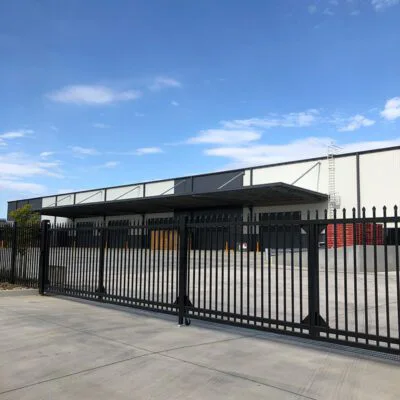
When it comes to farming, ranching, or animal care, it is crucial to understand the differences between cattle panels and horse panels. While these two types of panels may seem similar, they serve distinct purposes and have specific design considerations. In this article, we will delve into the disparities between cattle panels and horse panels, examining their construction, function, safety features, practical applications, and cost considerations.
Cattle Panel:
Cattle panels serve as a primary containment and handling solution for cattle, enabling the creation of pens, corrals, or fencing systems that efficiently manage and control cattle movement.

Horse Panel:
On the other hand, horse panels prioritize safety and injury prevention for horses. Horse panels prioritize safety by providing a secure enclosure that minimizes the risk of entanglement or injuries, catering to their unique behaviors and sensitivities.

Cattle Panel:
Manufacturers typically construct cattle panels using heavy-gauge or galvanized steel, giving them a sturdy build with strong vertical and horizontal wires. The spacing between the wires is designed to be within the range of 10-15 cm, which can prevent cattle from squeezing or getting their heads stuck, and also facilitate managers to check livestock. The height of the cattle fence is generally 1.8 to 2.3 meters to prevent cattle from jumping or falling. Additionally, cattle panels are generally taller than horse panels to effectively contain taller livestock.
Horse Panels:
In contrast, manufacturers construct horse panels with the safety of horses in mind, using high-quality steel or other durable yet flexible materials. The height of the horse fence is mostly 1.2 to 1.5 meters, which is in line with the height of the horse, facilitating the movement of horses and preventing them from crossing the fence. The spacing between the wires in horse panels is narrower compared to cattle panels, reducing the risk of hooves or legs getting caught while still allowing sufficient visibility for horses. Furthermore, horse panels often feature rounded corners and smooth edges to prevent injuries caused by sharp edges or protruding wires.
Cattle Panel:
When it comes to containment, cattle panels are designed to provide secure containment for cattle. Their robust construction and appropriate spacing between the wires ensure that cattle cannot break through or damage the panels easily. Moreover, the strength and height of cattle panels act as a deterrent, preventing cattle from jumping or pushing them over.
Horse Panel:
On the other hand, horse panels prioritize the safety and security of horses. The narrower spacing between the wires in horse panels aims to prevent horses from sticking their heads or hooves through the panels, thereby reducing the risk of injuries. Additionally, horse panels are typically taller to accommodate the height of horses and discourage them from attempting to jump over.
Cattle Panel:
While ensuring effective containment and handling of cattle, it is important to consider the safety of handlers when working with cattle panels. Rounded corners and smooth edges help minimize the risk of injury to both cattle and handlers. Additionally, proper installation techniques, such as securely anchoring the panels, ensure stability and prevent accidents caused by panels tipping or shifting unexpectedly.
Horse Panel:
Safety is paramount when it comes to horse panels. The rounded corners and smooth edges of horse panels eliminate sharp points that could cause cuts or puncture wounds. By carefully designing the spacing between the wires, the risk of horses getting tangled or entrapped is minimized, thereby reducing the likelihood of serious injuries that may occur during moments of panic or unpredictability.
Cattle Panel:
Cattle panels offer a greater cost-effectiveness compared to horse panels due to their simpler design and construction. Moreover, the straightforward installation process and durability of cattle panels make them a practical choice for the containment and handling of cattle. The annual maintenance cost of a cattle fence is approximately 5% of its initial installation cost. Furthermore, maintenance typically involves periodic inspections, repairs, and ensuring the panels remain securely anchored.
Horse Panel:
In contrast, horse panels have additional safety features, which can make them slightly more expensive than cattle panels. However, the investment is justified by the increased safety and reduced risk of injuries for horses. The annual maintenance cost of a horse fence is approximately 10% of its initial installation cost. Proper maintenance of horse panels involves regular inspections, ensuring all components are in good condition, and promptly repairing or replacing any damaged sections to maintain the integrity of the enclosure.
Cattle Panel:
Cattle panels find applications in various farming and ranching scenarios. Farmers and ranchers commonly use cattle panels to create cattle pens, sorting areas, holding corrals, and perimeter fencing. The versatility and durability of cattle panels make them suitable for both temporary and permanent installations.
Horse Panel:
Similarly, horse panels have a wide range of practical applications in equestrian settings. They are ideal for constructing horse stalls, paddocks, round pens, and riding arenas. Additionally, horse panels can be easily customized and reconfigured to suit specific needs, providing a safe and secure environment for horses.
Understanding the distinctions between cattle panels and horse panels is essential for anyone involved in farming, ranching, or horse care. By recognizing the differences in purpose, construction, safety features, practical applications, and cost considerations, individuals can make informed decisions when selecting the appropriate panels for their specific requirements. Ultimately, choosing the right panels contributes to the overall efficiency, animal welfare, and security of the operation.